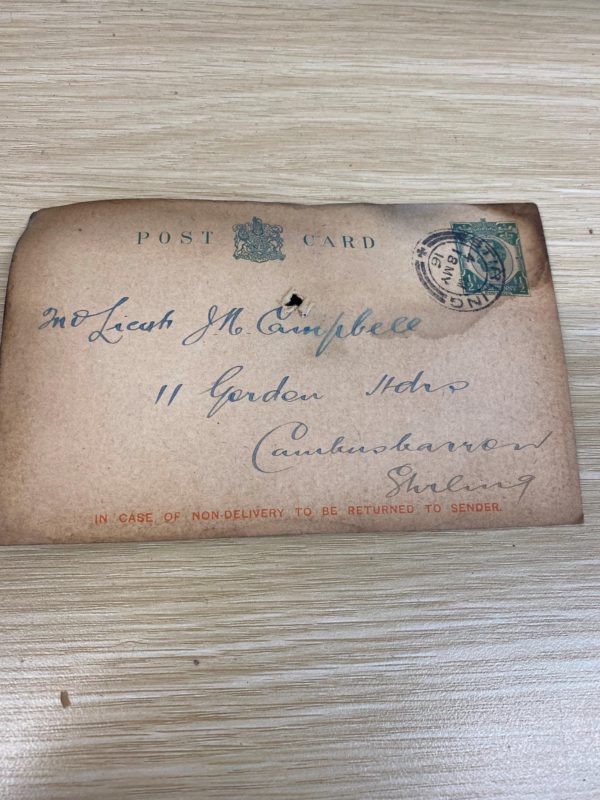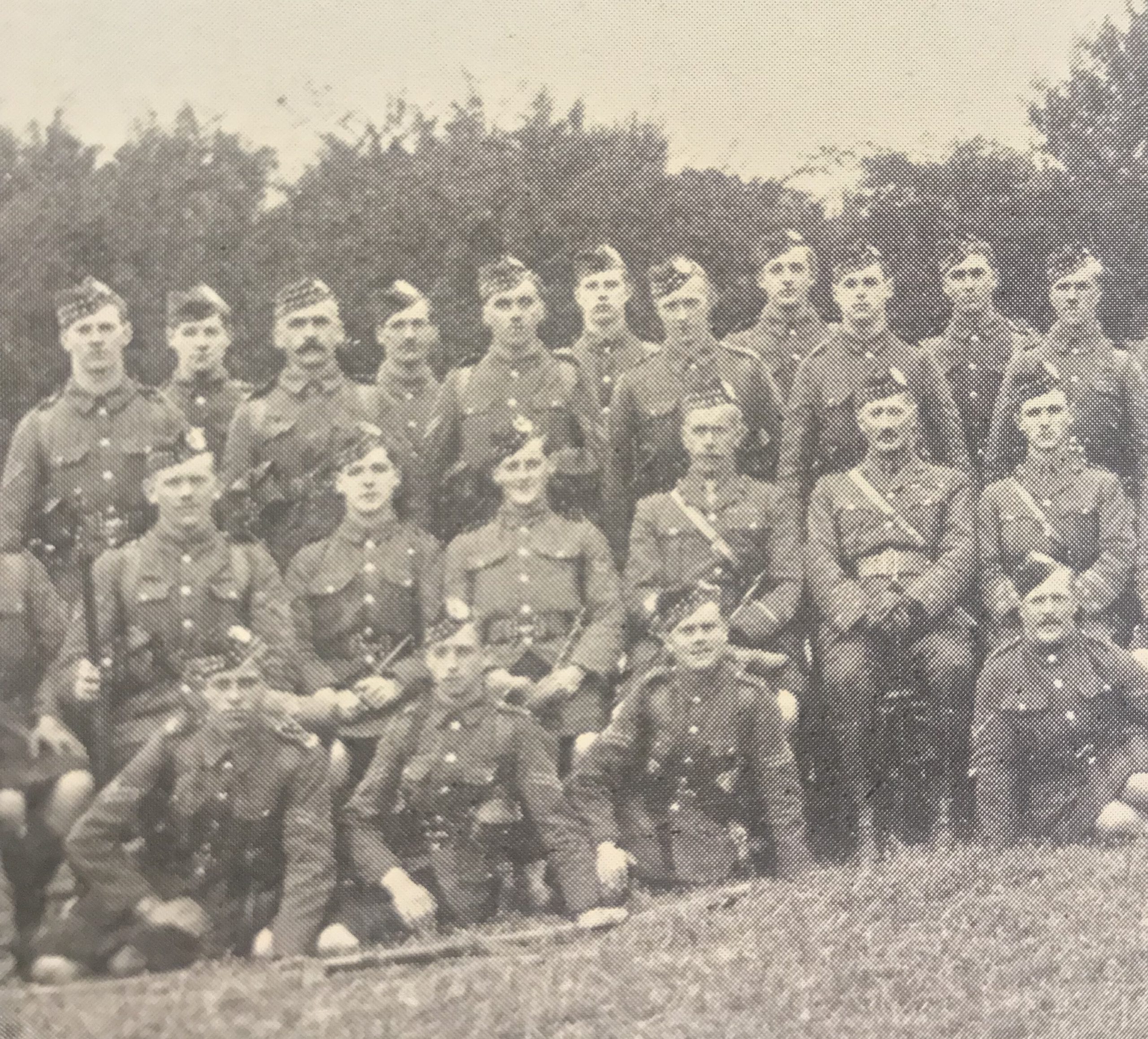While the work on Stirling station roof is now complete, the treasure trove of WW1 postcards that were unearthed from the roof crawl space in 2021 continues to offer insights into the lives of the men who served in local regiments. Network Rail recently shared the post cards publicly and asked for assistance from members of the public in a bid to uncover the stories of the men to whom the postcards were addressed. In the year since, progress has been made in identifying and unearthing the stories behind these postcards.
With the assistance of the Regimental museums, information, and photos, have emerged for three of the soldiers featured. As well as the stories of service and bravery during war time including in the Battle of Loos and at the Somme, the search also uncovered human stories of the men and offered insights into their lives beyond the army and back in civilian life. This included stories of marriage and starting families but also in one case, tales of theft and bigamy!
Appeal for anyone who may have further information

A year on from sharing the initial story of the post cards Network Rail felt it appropriate to share an update and reiterate our appeal for anyone who may have further information to get in touch and help us complete their stories.
Captain and Quarter Master, Arthur James MacDonald of the 8th Cameron Highlanders, re-joined the Army as a commissioned officer in 1914 at outbreak of war. He was dispatched to Stirling from Dingwall with his regiment and then went on to fight in the Battle of Loos in September 1915. During this battle, the regiment suffered heavy losses and only 58 of the original 776 men survived the day. Capt. MacDonald survived the battle and was wounded on 28th October 1918, presumably during the final Allied Offensive. Given that this was only several weeks from Armistice, the Regimental Museum believes he likely survived the war and returned home.
Private and Corporal, Walter Reddiford, it is believed was born on 19th March 1898 in Lancashire, signed up to B Company, 11th Gordon Highlanders in May 1916. He initially joined as a Private and was promoted to Lance Corporal in June 1916 and then to Corporal in August that same year. Around this time, Corporal Reddiford was sent as part of a draft to the British Expeditionary Force and after arrival in France, he was posted to 2nd Battalion Gordon Highlanders. This battalion suffered many losses during the Battle of the Somme, July – November 1916. It is likely that Corporal Reddiford was posted as part of draft reinforcements to make up for the losses sustained. From 1917 until the end of the war, 2nd Battalion served in Italy. Corporal Reddiford survived the war and was awarded the Victory Medal and British War Medal. Upon his return home, he married Mary Ann Heywood in 1918 and demobbed in 1919 to live with Mary Ann in Royton. In 1920, it appears that he and Mary Ann moved to Wrexham but later that year sent Mary Ann “home to her parents”. It is believed there were two children within this marriage. The next we hear of Corporal Reddiford is in a newspaper article where charges of theft, forgery and bigamy were brought against him. He was accused of stealing two cheques belonging to Colonel Gregson of Southport and of forging and uttering one of them for £6 5s. 6d. At the time of his arrest, letters were found in his possession which led to a further charge of bigamy and Florence N Stanbrooke gave evidence as to going through a form of marriage with Reddiford in March 1922.
2nd Lieutenant John Neil Campbell, born in Glasgow in October 1896 and educated at Hutcheson’s Grammar School, Glasgow. He enlisted into the 11th Gordon Highlanders in November 1915. Lt. Campbell was sent as part of a draft to the British Expedition Force in September 1916. He arrived in France on 10th September 1916 and was posted to the 2nd Battalion Gordon Highlanders with the rank of Temporary Lieutenant. When the war ended, he was awarded the Victory Medal and the British War Medal. Lt. Campbell demobbed he moved to 20 Queen Mary Avenue, Glasgow. Through the Hutcheson’s Grammar school archives, we have been able to find out that Lt. Campbell married Ethel May Rodgers in 1934 and was listed as a chartered accountant, living in Cuckfield, Sussex in the England and Wales register of 1939. He died on April 20th 1968. It is believed he was survived by his three children.
Current efforts from Network Rail and the Black Watch Regimental Museum have drawn a blank with the search for the soldier serving in the 6th Blackwatch. Names could include George, Rankine, Raukine, Ranking or Rankins.

